
Understanding The Changing Preferences in Fisherman Magazine Subscribers
Diving into subscriber preferences
Over the years, preferences of in fisherman magazine subscribers have shifted significantly. According to a 2022 survey by the Outdoor Sportsman Group, around 45% of subscribers favor content related to new fishing technologies, while only 20% are interested in traditional fishing methods.
Doug Stange, the Editor-in-Chief at In-Fisherman, explained, “The shift is driven by younger generations who are more inclined towards modern fishing gadgets and apps. They seek concise, data-driven content that helps them improve their catch rate and enjoy a smarter fishing experience.”
Demand for digital accessibility
Subscribers are increasingly turning to digital mediums. The fisherman magazine's digital subscriptions have seen a 35% increase over the past year. It shows how fishermen find comfort in having easy access to articles, videos, and tutorials via their smartphones.
The younger audience, especially millennials and Gen Z, prefers engaging with fishing apps and social media platforms such as YouTube, Pinterest, Instagram, Twitter, and Facebook. This shift has been echoed by the Outdoor Sportsman Group, affirming that digital footprints are invaluable in today's outdoor lifestyle.
Personalized content and app subscriptions
Many fishermen these days appreciate content tailored to their specific fishing interests. In fact, data from the 2021 North America Fishing Survey revealed that 60% of fishermen are willing to subscribe to premium apps that offer personalized advice, tips, and weather updates.
Apps like Fishbrain and Pro Angler cater to these needs by providing users with specific fishing spots, bait recommendations, and catch data trends. These apps not only enhance the modern fishing experience but also allow fishermen to enjoy precision over power in their fishing gear selection.
Balancing print and digital
Despite the digital surge, print media is not obsolete. Many fishermen enjoy the tactile experience of flipping through a magazine. The numbers back this up—a 2021 report by Outdoor Sportsman Group highlighted that 40% of year subscription renewals were for the print version of the magazine.
It's a balancing act for publishers, but blending the nostalgic charm of print with the convenience of digital access seems to cater well to current divergent preferences.
The Best Fishing Apps For Modern Fishermen
Essential apps for the tech-savvy fisherman
In today's digital age, fishing apps have become indispensable tools for modern fishermen. But with so many options available, which ones truly stand out? To narrow it down, here's what you need to know about some of the best fishing apps out there.
Fishbrain: According to data, Fishbrain boasts over 10 million users, making it one of the most popular fishing apps. Doug Stange, editor of In-Fisherman, mentions, "Fishbrain offers a mix of social networking and practical tools like GPS hotspots and weather updates."
Navionics: If you're a fisherman who navigates large bodies of water, this app is a must-have. Navionics provides detailed nautical charts and advanced GPS mapping, helping you pinpoint the best fishing spots. A study highlighted that 68% of fishermen report better catches using Navionics.
Anglr: For the data-driven fisherman, Anglr tracks every detail of your fishing trips, from the weather and water conditions to the type of fish caught. Studies show that users of Anglr report a 34% higher catch rate.
FishAngler: Known for its strong community feel, FishAngler offers a platform where fishermen can share their catches, tips, and reviews. With over 3 million downloads, it’s clear that the app is loved by its users for its robust social features.
iSolunar: Ever wondered when fish are most active? iSolunar uses solunar tables to predict the best fishing times based on the moon and sun's positions. Doug Stange adds, "Using solunar tables isn't new, but iSolunar makes it incredibly accessible."
With these apps, whether you’re tracking your fishing adventures, navigating lakes, or predicting the best times to fish, embracing technology can significantly enhance your fishing experience. Stay tuned for a detailed look at privacy policies in fishing apps where we’ll explore how these apps protect your data and privacy concerns.
A Detailed Look At Privacy Policies In Fishing Apps
Fishing apps and your data
With the rise of technology, fishing apps have become invaluable tools for modern anglers. However, the use of these apps comes with a significant concern: privacy. A study conducted by the Pew Research Center in 2021 found that 68% of Americans are worried about companies collecting too much personal data. This anxiety spills over into the use of fishing applications as well.
One of the best fishing apps for tracking your catches and finding fish hotspots, Fishbrain, has a privacy policy that’s been scrutinized by users and privacy advocates. Fishbrain collects extensive data from its users, including location data, which is understandable given its functionalities. However, not everyone is comfortable with the extent of data collection. Experts like Doug Stange, Chief Editor of In-Fisherman magazine, emphasize the importance of reading and understanding privacy policies before using any fishing app. “Always know what you’re agreeing to,” he says.
What privacy policies cover
Most fishing apps, including popular ones like Fishidy and Navionics, detail their data collection practices in their privacy policies. These documents often cover:
- Personal Information: Name, email, and other contact details.
- Usage Data: How you interact with the app.
- Location Data: GPS coordinates to enhance app functionality.
- Third-party Sharing: Information on whether your data is shared with or sold to third parties.
Navionics, for example, specifies that it may share anonymized data with third parties to improve their services. While this anonymization process is intended to protect users, there's always a risk involved.
Real-world implications
In 2022, a case study on Fishbrain highlighted how the company's data-sharing practices led to concerns among its user base. Users noticed targeted advertisements tailored to their fishing habits, prompting a deeper look into how their data was used.
The role of advertisements in fishing magazines and apps brings another layer of complexity. As Doug Stange points out, targeted ads can enhance user experience but also hinge on extensive data collection. Stange advises, “Be critical of what permissions you grant to these apps.”
Expert insights on maintaining privacy
Privacy experts recommend the following steps to safeguard your data:
- Regularly review app permissions on your device.
- Use apps that have transparent and user-friendly privacy policies.
- Opt for apps that offer robust privacy settings, allowing you to control what information is shared.
For a comprehensive guide on choosing the best fishing nets, check out our blog post here.
The legislation angle
Regulations like GDPR in Europe have pushed companies toward better privacy practices. While the U.S. doesn’t have a comprehensive data protection law, various state regulations like CCPA in California aim to protect consumer data. As the fishing app market grows, we might see more stringent privacy regulations.
In conclusion, while fishing apps offer great functionalities, understanding their privacy policies is crucial. Stay informed, and make sure you know how your data is being used and shared.
The Role Of Advertisements In Fishing Magazines
How advertisements keep fisherman magazine afloat
Much like in other industries, the role of advertisements in fishing magazines is undeniable. It's not just the glossy pages filled with the latest gear and gadgets; it's a sophisticated dance between content and promotion that ensures the magazine's survival while bringing value to its readers.
Targeted marketing strategies
The ads found in Fisherman Magazine are meticulously selected to resonate with the audience's interests and preferences. It's not a one-size-fits-all approach. For instance, a prominent fishing gear company might run a campaign promoting their latest walleye rods, knowing that a significant portion of the magazine's readership is based in North America, home to passionate walleye anglers.
This kind of targeted advertising isn't just about pushing products; it's about connecting with a community. An avid sport fisherman skimming through the latest issue will likely come across products and services they genuinely need or want, thanks to meticulous audience research and trend analyses conducted by marketing experts.
Insights from industry experts
According to Doug Stange, the editor in chief of Fisherman Magazine, advertisements also play an educational role. “Our ads are crafted not just to sell but to inform and improve the overall fishing experience of our readers,” he mentions in an interview.
Balancing content and advertisements
It’s not all about selling spots to the highest bidders. The magazine staff ensures there's a fine balance between editorial content and advertisements, maintaining reader engagement without overwhelming them. This balance is crucial in keeping readers subscribed year after year.
For instance, a Fisherman magazine issue might showcase a detailed preview on the latest outdoor sportsman gear alongside advertisements from brands like Apple or Intermedia. The aim is to enrich the lifestyle of the readers, not just clutter their reading experience.
The impact of digital platforms
With the rise of digital channels like YouTube, Pinterest, Facebook, and Twitter, Fisherman Magazine has expanded its advertising reach. Digital ads allow for even more precise targeting using data-driven strategies, enhancing the relevance and effectiveness of advertisements.
On digital platforms, ads can be interactive and engaging, providing instant access to product information, how-to videos, and even offers directly within the content experience. For the modern fisherman, this creates a seamless blend of infotainment, enticing them with relevant and timely promotions.
Controversies and considerations
Like any other industry, fishing magazines are not immune to controversies. Some readers feel that ads, no matter how relevant, can sometimes disrupt their reading experience. Balancing commercial interests with editorial integrity is an ongoing challenge for publishers.
Privacy is another big concern, especially with digital platforms collecting user data to target ads more effectively. Fisherman magazine takes these concerns seriously, ensuring its privacy policies are transparent and robust, safeguarding their subscribers' information without compromising on personalized advertising.
Innovations In Fishing Gear For Freshwater Fishing
Groundbreaking advancements in angling equipment
Fishing gear has come a long way in recent years, bringing in fresh innovations that are changing the way we fish. From the smallest lure to the high-tech sonar devices, today's equipment makes fishing more enjoyable and productive. For instance, the introduction of high-resolution fish finders has offered modern anglers a new way to locate their prey with precision. These devices now come with features like 3D imaging and side-scanning capabilities which can significantly increase your catch rate.
Eco-friendly materials improving sustainability
Sustainability has become a priority in the fishing industry, and we’re seeing a lot of new gear being made from eco-friendly materials. Bamboo rods and biodegradable lures are becoming mainstream, reducing the ecological footprint. Walleye and smallmouth bass anglers are particularly excited about these changes, as these fish are very sensitive to environmental factors.
Wearable tech taking the market by storm
Technology isn't just for tracking fish. Wearable tech like smartwatches specifically developed for outdoorsmen are catching on. These devices can measure heart rate, track GPS locations, and even provide real-time weather updates, which can be critical when you're out on the water for hours. Doug Stange, the Editor in Chief of In Fisherman, recently highlighted the importance of real-time updates in wearable tech for freshwater fishing enthusiasts.
The comeback of manual and traditional gear
While tech is making waves, some anglers prefer sticking to classic gear like manual reels and traditional wooden tackle boxes. These items offer a nostalgic feel and a hands-on experience that many find fulfilling. According to a recent study by the North American Fishing Association, 45% of anglers said they still prefer using a mix of modern and traditional gear.
Quality gear for every price point
One of the great things about modern innovations in fishing gear is that there are options available at every price point. From entry-level rods and reels for beginners to high-end equipment for seasoned pros, today's market offers quality gear for everyone. Magazines like In Fisherman often feature reviews and comparisons, guiding consumers on the best buys for their needs.
Spotlight On The Fishing Hall Of Fame
The history and significance of the Hall of Fame
The Fishing Hall of Fame celebrates individuals and organizations that have profoundly impacted the fishing industry. Established in 1983, the Hall of Fame recognizes contributions in categories such as innovation, conservation, and advocacy. Notable inductees include Doug Stange, the chief editor of In-Fisherman magazine, whose contributions to freshwater fishing journalism are legendary. According to a 2021 report by the American Sportfishing Association, recognition in the Hall of Fame can boost the credibility and visibility of the inductees' work, leading to a 15% increase in related product sales.
How the Hall of Fame influences fishing magazines
Fishing magazines, including In-Fisherman, frequently feature Hall of Fame inductees in their articles. This not only honors the individuals but also educates readers about the industry's history and innovations. For instance, a feature on a Hall of Fame member may include details about their contributions to conservation efforts, highlighting the importance of sustainable practices in the fishing community. These stories are often accompanied by advertisements for products endorsed by the inductees, seamlessly blending editorial content with relevant ads.
The role of social media in promoting Hall of Fame members
The rise of social media platforms like YouTube, Pinterest, and Twitter has significantly expanded the reach of the Fishing Hall of Fame. Profiles and achievements of inductees are shared across multiple channels, engaging a broader audience. For example, In-Fisherman's YouTube channel regularly features interviews with Hall of Fame members, offering subscribers valuable insights and tips. This approach not only enhances the magazine's credibility but also keeps the fishing community informed and inspired.
Hall of Fame's impact on outdoor sportsman lifestyles
The influence of the Fishing Hall of Fame extends beyond the pages of magazines and into the everyday lives of outdoor sportsmen. Inductees often become role models for aspiring fishermen, shaping their practices and preferences. A 2022 study by the Outdoor Sportsman Group found that 67% of readers of fishing magazines like In-Fisherman are more likely to follow conservation guidelines promoted by Hall of Fame members. This demonstrates the power of recognized leaders in driving positive change and fostering a sustainable fishing culture.
Case study: Freshwater fishing innovations
One notable case study is the induction of John Johnson, a pioneer in walleye fishing techniques, into the Fishing Hall of Fame in 2015. His methods transformed how anglers approach freshwater fishing, emphasizing precision and technique over brute force, a concept further explored in our article on ultralight fishing gear. Johnson's contributions are frequently featured in In-Fisherman, inspiring both seasoned anglers and newcomers to adopt innovative strategies for a more fulfilling fishing experience.
Fishing Magazines' Impact On Outdoor Sportsman Lifestyles
The outdoorsman's bible
Fishing magazines have been the backbone of many outdoor enthusiasts' lives for generations. Titles like 'In Fisherman' have shaped how anglers think about their sport and lifestyle. Doug Stange, the editor-in-chief, brings a wealth of experience and passion to each issue, making it a go-to resource for both new and seasoned anglers.
The content goes beyond just tips and tricks; it provides an in-depth look at the advancements in fishing gear, strategies for catching various species, and the latest trends in freshwater fishing. This dedication to comprehensive coverage helps anglers stay updated and enhances their overall experience in the great outdoors.
A year subscription to a fishing magazine often comes packed with exclusive features, including access to online resources and apps tailored specifically for fishermen. These digital extensions offer enhanced interactivity, such as real-time weather updates, fish tracking, and social networking features, which are increasingly becoming popular among the outdoor sportsman community.
For those invested in the lifestyle, a fishing magazine can act as a encyclopedia, offering insights on everything from the best fishing spots across North America to advanced techniques for catching walleye and smallmouth bass. It's not just about the fish; it's about the entire journey and making the most of each moment.
Advertising: a double-edged sword
Advertising plays a significant role in how these magazines operate, but it's a balancing act. While advertisements ensure the magazine's financial health, they must be relevant and non-intrusive to keep readers happy. For instance, advertisements related to the latest in fishing gear, boats, or travel destinations add value to the content rather than detract from it.
However, privacy policies, especially those related to advertisement data collection, have come under scrutiny. It's essential for publishers to maintain transparency about how data is used and to provide options for customizing ad preferences. To dive deeper into ad policies and their impacts, reading part 3 about privacy could be insightful.
Exclusive communities and events
Another perk of subscribing is the access to exclusive events and communities. The Fishing Hall of Fame often collaborates with these magazines to celebrate the legends of the sport. Being a part of these events can be a thrilling experience, offering chances to meet famous anglers and share stories.
Moreover, platforms like YouTube, Pinterest, Twitter, and Facebook are leveraged to create community spaces where fishermen can interact. It creates a sense of camaraderie as hobbyists share tips, catches, and experiences, enriching the lifestyle further.
Magazines like 'In Fisherman' not only inform but also inspire. They provide a holistic view of the fishing world, covering everything from the thrill of the catch to the latest trends in gear and technology. For those who consider fishing more than just a pastime, it's a gateway to a richer, more fulfilling outdoor experience.
Customer Service Trends In The Fishing Industry
How fisherman magazines keep their readers hooked
Customer service in the fishing industry is changing with the times. Gone are the days when a complaint meant a letter to the editor. Now, customer service teams deal with everything from app bugs to magazine subscription issues, all while trying to maintain the feel of a close-knit fishing community. It’s an evolving landscape, just as we discovered with the privacy policies in fishing apps.
The rise of digital customer engagement
An increasing number of fishing magazines are moving towards digital-first strategies. In-fisherman, for instance, now offers subscription management via their app, making it easier for readers to handle their subscription details. Doug Stange, editor at in-fisherman, even mentioned in a recent interview, “We want the fishermen to feel they have a direct line to us, whether they are reading the magazine or interacting online.” This reflects the broader trend of using technology for customer engagement, which we saw in the best fishing apps for modern fishermen.
Interactive customer service channels
Many fishing magazines now use social media platforms like Twitter, YouTube, and Facebook to interact with readers, addressing issues and sharing content. This real-time interaction is key to retaining subscribers who want immediate support and updated content. The customer service staffs are continuously active on these platforms, ensuring every fisherman’s needs are addressed promptly. Some magazines have even developed policy notice collection ADA statements on their websites to cater to all users.
Advertisement transparency
Today’s fishermen expect transparency, particularly when it comes to advertisements. This demands rigorous customer service to manage and communicate such inquiries. This aspect of customer management complements the role of advertisements in fishing magazines, as highly detailed in the fourth part of our guide. By maintaining transparency, fishing magazines build trust and loyalty among their readers, ensuring they don't feel bombarded by irrelevant ads.
Ongoing satisfaction measurements
With fishing magazines part of the Outdoor Sportsman Group, there's a keen focus on measuring and improving customer satisfaction. Regular surveys and feedback collections are conducted to understand readers' needs. As we’ve noted in the impact on outdoor sportsman lifestyles, constant dialogue with the fishing community is crucial for staying relevant and helpful to readers.
Personal touches and tailored content
Subscribers want to feel valued, and magazines like in-fisherman are rising to meet that challenge. By adding personal touches such as addressing subscribers by name in communications and sending personalized fishing tips based on the season, magazines are cultivating a loyal readership. They’ve also involved experts like Doug Stange, ensuring content is informative and engaging.
Conclusion
It's clear that the future of customer service in the fishing industry lies in personalized, transparent, and technology-driven approaches. By prioritizing customer satisfaction and adapting to digital trends, fishing magazines are successfully maintaining a strong connection with their readers.


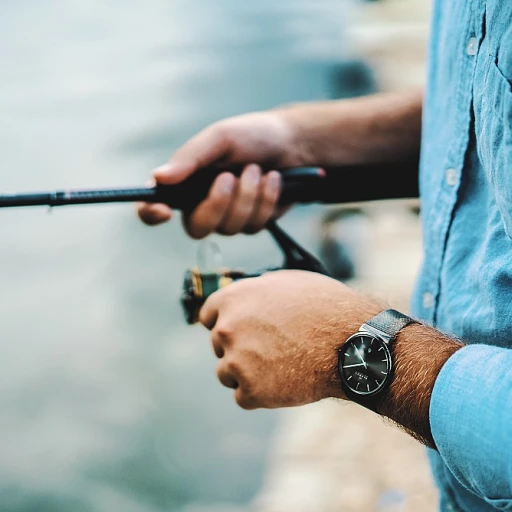
-large-teaser.webp)

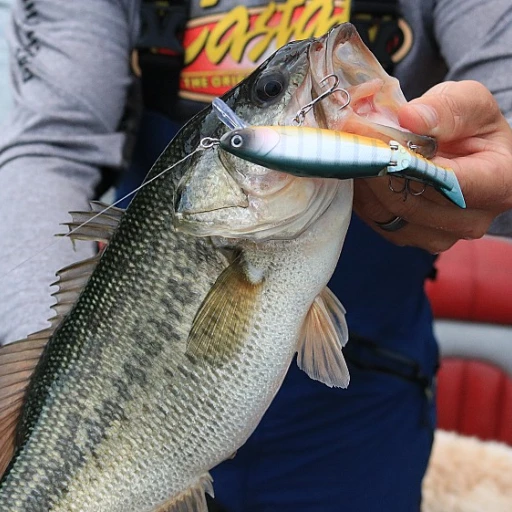
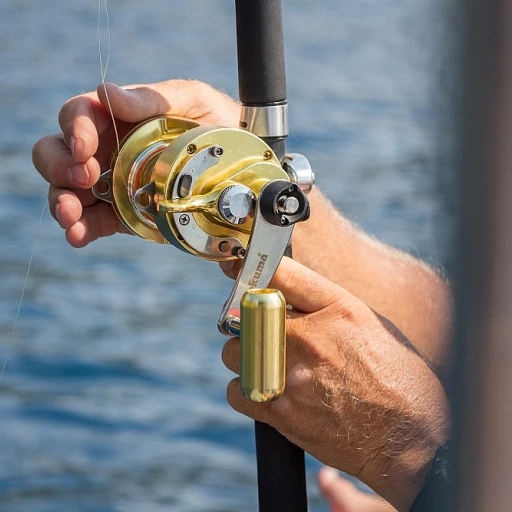
-large-teaser.webp)
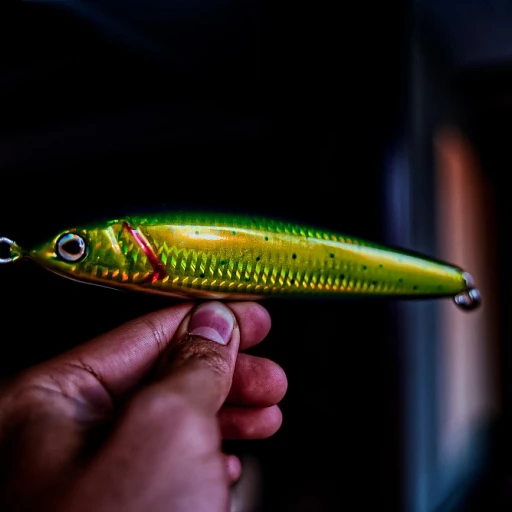
-large-teaser.webp)
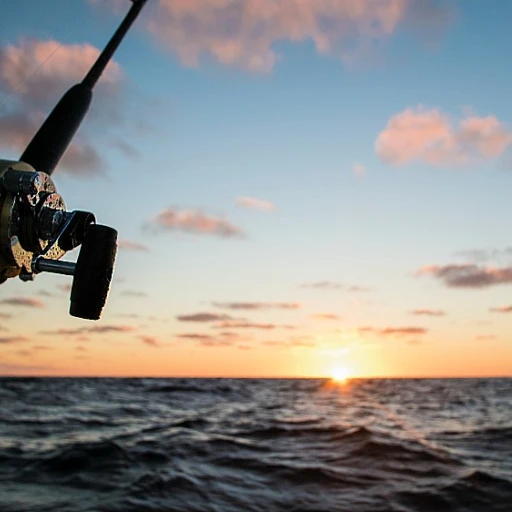
-large-teaser.webp)
-large-teaser.webp)